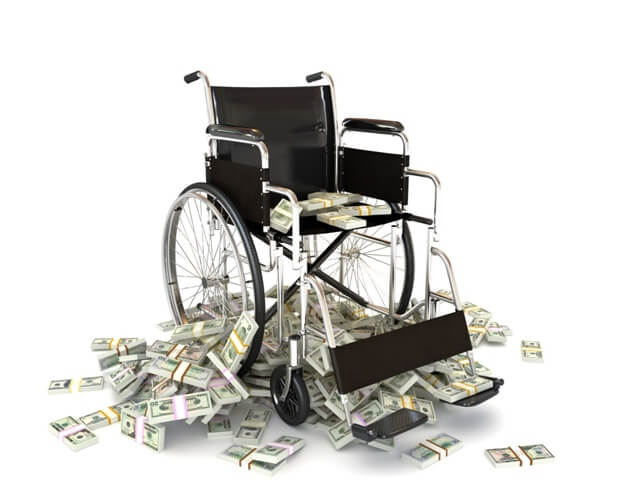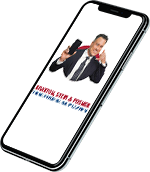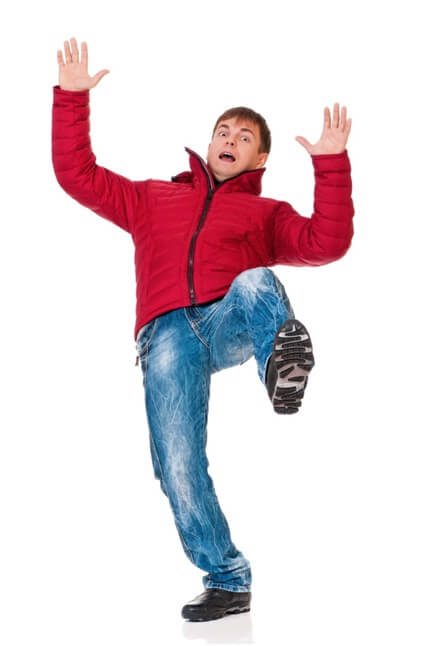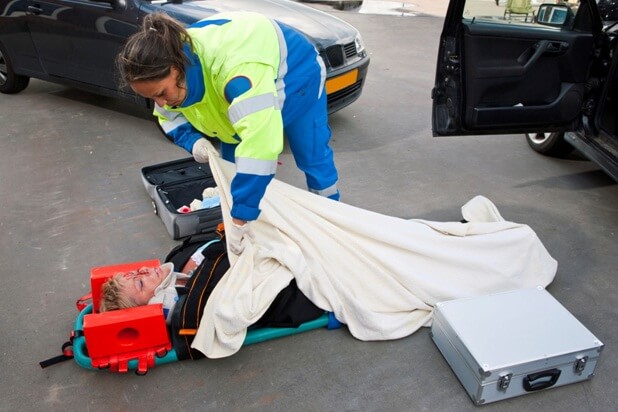We’ve all heard a story like this one before: a man walks into a department store with a banana peel, surreptitiously tosses it on the floor, then gets down on the ground and pretends to have seriously injured himself by slipping on it.
Of course, slipping on banana peels is mostly just a myth, but that’s beside the point. When most people think of injury lawsuits where someone hurts themselves at a business and tries to sue them for it, a version of this is what they imagine – scam artists out to earn a big payday by faking a problem and blaming someone else.
Why is this the image that we picture? Two reasons:
1) Because the media loves stories that catch people in the act of doing something wrong. It’s a lot more entertaining watching a security video of someone pretending to slip and fall than it is learning that the teenager cleaning up at the local Walmart forgot to put up a wet floor sign.
2) Because faking falls in order to get money from a lawsuit is a real problem that costs our country a lot of money.
How Big of a Problem Is Insurance Fraud for Falls?
By some estimates, fraudulent slip and fall claims cost around $2 billion each year in our country when litigation costs are factored in. But that’s just the beginning. According to the National Insurance Crime Bureau, slip and fall claims that they deemed “questionable” increased by 12% from 2010 to 2011. This news report from KXJB in North Dakota makes the problem sound even worse, saying that “suspicious” claims have gone up an astounding 57% since 2008!
The worst part, though, might be the belief that many faked incidents never even turn into claims since the scam artist in question goes directly to the business owner and cuts a deal for cash. Why would businesses agree to such an arrangement? Because they are afraid of the costs and bad publicity involved if the situation ends up going to court. And even if it is simply handled through their insurance, they believe it may end up costing them more by raising their premiums.
The Case of Florida and Slip and Fall Reform
About a decade ago, the Florida Supreme Court presented a ruling on a personal injury liability case that essentially said businesses were responsible for hazards on their property even if they weren’t aware that those hazards existed. This led to a sharp increase in claims, as well as giving the state a reputation as an easy place to win money for slip and falls.
Naturally, businesses weren’t happy because this put the entire burden on them, and in 2010, the legislature created a new law. It required claimants to show that businesses either knew about the specific problem that caused their accident or that it was a hazard that occurred frequently enough that the company should have known and done something about it.
This was deemed a good compromise because it lessened the chance that a scammer could just come into a business and create the circumstances of their own accident, but it also left protections in for those who truly had suffered an injury that could have been prevented by the property owner. All they needed to do was provide evidence that the hazard that caused their injury was something that should have been dealt with.
Did it work? Well, that depends on who you talk to. Again looking at numbers from the NICB, Florida was second only to California from 2010 to 2011 in what they determined were “questionable” claims, beating out more populous states like Texas and New York. Even after reform, a lot of people were apparently still trying to scam their way to a big payout – at least according to statistics from the NICB. But statistics are a funny thing, and often there are two ways to look at them.
Are Slip and Fall Fakers Really That Big of a Problem?
The answer is an unfortunately complicated yes and no.
Yes, because it’s impossible to deny that something costing $2 billion each year is minor. Moreover, the bad publicity generated from these kinds of cases makes it that much tougher for people who legitimately suffer falls and deserve to be compensated for their pain and suffering.
Case-in-point: recently, a woman was awarded $10,000 after her apartment failed to clean away ice and snow, and she fell and seriously injured herself. Now that kind of money is nothing to sneeze at, but there’s a problem: the judge assessed the case before the trial and estimated that she should receive $65,000 to cover the cost of medical bills, litigation, and so on. The $10,000 she won doesn’t even cover the cost of going to trial!
But fakers are also, arguably, not that big of a problem when you look at the big picture from another angle. How so? According to the National Floor Safety Institute, only 3% of slip and fall claims are fraudulent. Some basic math tells us that means 97% of claims are real and valid and deserve compensation.
You’d never imagine that from all of the negative publicity, though. And you would also probably think that $2 billion dollars represents a huge portion of overall insurance fraud, when in fact it’s only about 5% of the $40 billion lost each year. The problem seems bigger than it is because we’re constantly being bombarded with stories about it.
What Needs to Be Done for Future Fall Cases
The trick in engaging in this type of reform is that you need to be careful to strike a balance. The Florida legislature was on the right track, but more probably need to be done. Businesses can’t be afraid that they’re going to be sued from the second they open their doors, but people who suffer from real injuries also can’t be so afraid to seek compensation that they simply back down. Depending on the severity of a fall, you can sustain damage that can haunt you for your entire life.

If we really want to limit fraud, perhaps more of the burden should be placed on lawyers to thoroughly examine the stories of their potential clients and look hard at the evidence before taking on these kinds of cases. Most well-respected litigators already do this, because they don’t want to gain a bad reputation. However, more can be done to standardize the process and hold people accountable. This will cut down on lost revenue for businesses, increase the likelihood that personal injury lawyers will win the cases they take, and free up valuable time in our court system.





